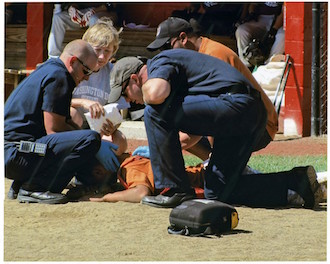Photojournalism
By Rex Dolby

With so much going on in the world, here are some tips on Photojournalism, which can be defined as collecting and presenting a news story with an image or images that are more significant than the written story. Some suggestions that may aid in that effort are:
If possible, spend some time with the people you are about to shoot to gain their trust before you start snapping pictures.
Be as unobtrusive as possible in how you dress and the lens you use to catch true action (not staged for effect). Shoot with available light so a flash doesn’t call attention to you.
Learn to hold your camera steady without a tripod so you can easily move rapidly to a different angle.
Compose your picture to include what is necessary to tell the story and avoid what may be unnecessary and distracting.
Start wide to establish a context for the story and then zero in on the most important elements.
When covering a sad or disturbing scene, be sensitive to the people you’re photographing and the way your pictures will tell their story.
People with authority may try to prevent you from shooting. Know your rights. Your coverage may reveal what they are attempting to hide.
We hope the situation doesn’t arise where you will want to use these suggestions, but if it does, you may now record the scene with a better chance of success.
An example of photojournalism, where the picture helps tell the story: EMS staff attends to a Little League catcher beaned by a foul ball. (Photo by Rex Dolby.)
POSTED: 09/28/16 at 1:51 pm. FILED UNDER: Camera Club News







